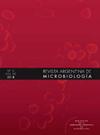Intervención educativa como estrategia de prevención de parasitosis intestinales y valoración del estado enteroparasitológico en centros de desarrollo infantil de la ciudad de Santa Fe, Argentina
IF 1.8
4区 生物学
Q4 MICROBIOLOGY
引用次数: 0
Abstract
Intestinal parasitic diseases constitute a cosmopolitan public health concern, with greater prevalence in developing countries, and mainly affecting children. The aim of this study was to develop an educational intervention aimed at mothers/guardians of children attending three child development centers (CDI) in Santa Fe, Argentina, during 2018. An educational intervention was conducted using a descriptive, quasi-experimental design, with pre- and post-intervention assessment. This intervention included 36 mothers, and was carried out in three stages: diagnosis, intervention and final evaluation. Simultaneously, a coproparasitological study was performed on 48 children under 5 years of age, who were assisted in the CDI, with the aim to understand and address the parasitic infections prevalent in the child population. It was possible to compare the correct answers before and after the educational intervention, observing a statistically significant increase (p = 0.008742) in the average number of correct answers. Enteroparasites were identified in 54% of the population of children analyzed, 10% were biparasitized and 6% had more than two parasitic species. The most frequently detected parasites were Blastocystis spp., Giardia intestinalis and Ascaris lumbricoides. The educational intervention was positive, resulting in an improvement in the level of knowledge related to intestinal parasitosis and its prevention. This educational intervention experience highlights the importance of ongoing education in promoting a healthy lifestyle and preventing parasitosis in vulnerable populations.
[将教育干预作为预防肠道寄生虫病的策略,并评估阿根廷圣菲市儿童发展中心的肠道寄生虫病状况]。
肠道寄生虫病是一个世界性的公共卫生问题,在发展中国家发病率更高,主要影响儿童。本研究的目的是针对2018年期间在阿根廷圣菲的三家儿童发展中心(CDI)就读的儿童的母亲/监护人制定一项教育干预措施。教育干预采用描述性准实验设计,进行干预前和干预后评估。该干预包括 36 名母亲,分三个阶段进行:诊断、干预和最终评估。与此同时,还对 48 名 5 岁以下的儿童进行了寄生虫学研究,这些儿童在儿童疾病防治中心得到了帮助,目的是了解和解决儿童群体中普遍存在的寄生虫感染问题。通过比较教育干预前后的正确答案,发现平均正确答案数有了显著提高(p=0.008742)。在所分析的儿童群体中,有 54% 发现了肠道寄生虫,10% 发现了双寄生虫,6% 发现了两种以上的寄生虫。最常检测到的寄生虫是布氏囊虫、肠道贾第虫和蛔虫。教育干预取得了积极的效果,提高了人们对肠道寄生虫病及其预防的认识水平。这一教育干预经验突出了持续教育在促进健康生活方式和预防弱势群体寄生虫病方面的重要性。
本文章由计算机程序翻译,如有差异,请以英文原文为准。
求助全文
约1分钟内获得全文
求助全文
来源期刊

Revista Argentina de microbiologia
MICROBIOLOGY-
CiteScore
3.30
自引率
0.00%
发文量
46
审稿时长
>12 weeks
期刊介绍:
La Revista Argentina de Microbiología es una publicación trimestral editada por la Asociación Argentina de Microbiología y destinada a la difusión de trabajos científicos en las distintas áreas de la Microbiología. La Asociación Argentina de Microbiología se reserva los derechos de propiedad y reproducción del material aceptado y publicado.
 求助内容:
求助内容: 应助结果提醒方式:
应助结果提醒方式:


